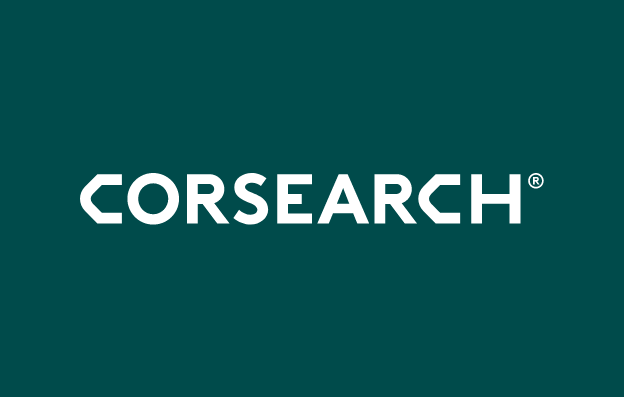Blog
The Tidal Wave of Piracy: Why We’re Seeing a Resurgence and How to Fight Back
- Content Protection

For years, many in the industry harbored a quiet optimism. The rise of affordable, accessible streaming services felt like the silver bullet against content piracy. Why bother with the hassle of illegal downloads and dodgy websites when legitimate, high-quality content was just a click away, often for less than the price of a coffee?
Yet, as we move through 2025, the data paints a starkly different picture. Piracy isn’t just a lingering threat; it’s experiencing a significant and concerning resurgence. Our traffic data suggests an average of 7 billion infringing sites are visited by audiences monthly. In 2024, the global piracy websites we monitored saw a total of 87 billion visits across all sources. And this isn’t just about a few niche cases – it’s a broad, pervasive trend impacting everything from TV and film to music, software, and even the publishing industry. The EUIPO’s reversal of the downward trend in digital piracy in 2022 was a clear warning sign, and the subsequent surge has confirmed our fears.
So, what’s driving this unwelcome comeback? As someone deeply involved in understanding and combating this challenge, I see several key factors at play, and they often intertwine to create a perfect storm for content owners.
The “subscription fatigue” phenomenon
Perhaps the most significant driver behind this resurgence is what we’ve come to call “subscription fatigue.” Remember those early days of streaming, when a single subscription gave you access to almost everything you wanted? Those days are long gone. The streaming landscape has fragmented dramatically. Every major studio, every production house, seems to have its own platform, each with its own exclusive content. Want to watch that new blockbuster? It’s on Platform A. Your favorite series? That’s on Platform B. And the niche documentary you’ve been meaning to catch? Platform C.
Individually, these subscriptions might seem affordable. But when you add them all up – Netflix, Disney+, Max, Paramount+, Peacock, Apple TV+, and so on – the monthly costs can quickly become astronomical. Consumers are finding their entertainment budgets stretched thin, especially in an era of rising living costs and inflation. This financial strain, combined with the sheer inconvenience of juggling multiple apps and logins, is creating a powerful incentive to seek out simpler, cheaper (or free) alternatives. Piracy, in its illicit convenience, often becomes the path of least resistance.
Moreover, the crackdown on password sharing by legitimate platforms, while understandable from a revenue perspective, is also having an unintended consequence. Millions of households that previously accessed content through shared accounts are now faced with a choice: either pay for yet another subscription or turn to illegal sources. Many are choosing the latter.
The evolving nature of piracy and content types
It’s not just about the volume; it’s about the shift in how and what is being pirated. While TV content remains the most pirated, accounting for nearly half of all illicit accesses in the EU, we’re seeing some interesting shifts. Live sports, for instance, has seen a massive 30% increase in piracy from 2021-2022. The ephemeral nature and high demand for live events make them prime targets for illegal streaming.
Perhaps even more surprising is the dramatic rise in manga piracy, which has now surpassed film piracy in the publishing sector. This highlights how piracy is adapting to emerging content trends and demonstrating that no format is safe, And the methods? Streaming is now king, with over half of all illicit TV content accessed this way. But what truly worries me is the growing role of social media and messaging channels as distribution hubs for pirated content. These platforms offer a cloak of semi-anonymity and virality, making it incredibly challenging to track and take down infringing material at scale. Mobile piracy, too, is surging, reflecting our “on-the-go” consumption habits.
The unrelenting release gap
While many studios have embraced earlier digital releases post-theatrical runs, a significant “release gap” still persists for some content. Impatient viewers, unwilling to wait weeks or months for a legitimate digital release, will inevitably seek out unauthorized copies. The longer this window, the more time pirates have to distribute high-quality, illicit versions, cutting directly into the legitimate revenue streams.
How Corsearch can help you combat this resurgence
This renewed wave of piracy demands a sophisticated, multi-faceted approach. At Corsearch, we understand that traditional methods alone are no longer enough. This is precisely why we’ve invested heavily in our Content Protection solutions, which leverage our “AI first, expert always” philosophy to tackle these evolving threats head-on.
Our solutions are designed to address the very trends driving this piracy resurgence:
- AI-Powered Detection & Monitoring at Scale: The sheer volume of pirated content across fragmented online spaces – from streaming sites and torrents to social media, messaging apps, and even obscure cyberlockers – demands an AI-native approach. Corsearch’s platform uses cutting-edge machine learning and content recognition to quickly and accurately identify infringing content. We scan billions of URLs, across multiple platforms, daily in order to detect infringing links. Not just for post release content, but identifying any premature leaks that may occur. This proactive, always-on monitoring is crucial for detecting threats as they emerge, providing early warning systems for content owners.
- Targeted & Automated Enforcement: Detecting content is only half the battle; effective enforcement is paramount. Our AI-driven “Search, Enrich, Act” engine dramatically streamlines the enforcement process. We don’t just send blanket takedown notices; our systems prioritize the most impactful infringements and identify the most efficient routes to compliance for each platform. This ensures a remarkably high removal success rate (often exceeding 90% across the platforms we support) and much faster takedowns, limiting the lifespan of pirated content. This automation is vital for combating the sheer scale of the problem.
- Human Expertise for Strategic Impact: While AI provides the power, our global team of intellectual property analysts provide the crucial human intelligence. They interpret the AI’s findings, identify patterns, and conduct in-depth investigations to unmask the operators behind large-scale piracy networks. This allows us to move beyond simple takedowns and disrupt the supply chain of pirated content at its source. Our experts also understand the nuances of legal frameworks across different jurisdictions, ensuring that enforcement actions are not only efficient but also legally robust.
- Optimizing Legitimate Traffic: Beyond removing illicit content, Corsearch’s solutions help improve the visibility of your legitimate content. By reducing pirated listings from search engine results and social media, we effectively clear the path for your official channels, driving consumers to where they can legally access your content. This is a crucial element of addressing the “convenience” factor that drives so many to piracy.
The resurgence of content piracy is a clear signal that the fight is far from over. It’s a dynamic battle that requires constant innovation and a combination of powerful technology and human expertise. At Corsearch, we are committed to providing the industry with the definitive tools of this era – AI and effective engineering – to safeguard the value of creative work and ensure that content creators and owners can continue to thrive. The tidal wave is here, but with the right defenses, we can turn the tide.





